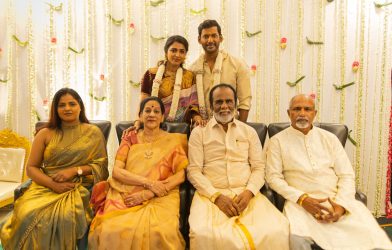Nestled in the rugged embrace of the Dângrêk Mountains, where the borders of Thailand and Cambodia intertwine, two ancient Hindu temples dedicated to Lord Shiva stand as timeless witnesses to a saga of devotion, empire, and conflict. The Preah Vihear Temple and Ta Moan Thom Temple, architectural jewels of the Khmer Empire, are more than sacred sites—they are the epicenter of a decades-long territorial dispute that has fueled nationalist passions, diplomatic standoffs, and violent clashes. For BharatTone.com, we weave the captivating story of these temples, their spiritual legacy, and the modern-day battle for their ownership, blending divine reverence with geopolitical drama.
Preah Vihear: The Cliffside Abode of Shiva
Perched majestically atop a 525-meter cliff in the Dângrêk Mountains, the Preah Vihear Temple (known as Khao Phra Viharn in Thailand) is a breathtaking testament to Khmer architectural genius. Built between the 9th and 12th centuries under the patronage of Khmer kings like Yasovarman I, Suryavarman I, and Suryavarman II—the mastermind behind Angkor Wat—this temple is dedicated to Lord Shiva, revered here as Sikharesvara and Bhadresvara, the lords of the mountains. Unlike most Khmer temples that face east, Preah Vihear’s unique north-south axis aligns it with Mount Meru, the cosmic center of Hindu cosmology. Its intricately carved gopuras, sanctuaries, and stone reliefs depict tales of Shiva’s divine power, centered around a sacred lingam.
Historical records paint a vivid picture of the temple’s spiritual grandeur. King Suryavarman II, a devout Shaivite, gifted golden vessels, white parasols, and elephants to his Brahmin advisor Divakarapandita, who offered a golden Nataraja statue to the temple. Over centuries, as Hinduism gave way to Buddhism in the region, Preah Vihear became a Buddhist pilgrimage site, yet its Shaivite essence endures in its carvings and inscriptions, echoing the influence of South India’s Pallava dynasty.
Ta Moan Thom: The Forgotten Shiva Sanctuary
Some 140 kilometers west lies the lesser-known Ta Moan Thom Temple, or “Great Temple of Grandfather Chicken,” a hidden gem from the late 10th century built under King Jayavarman VII. Located along the ancient Khmer highway linking Angkor to Phimai (now in Thailand), this Shiva temple in the Dângrêk Mountains features a natural lingam—a sacred rock formation—in its sanctum and a rare south-facing entrance, defying the eastward orientation of most Khmer temples. Constructed from laterite and sandstone, Ta Moan Thom was part of a trio of shrines, including Ta Moan Toch (a hospital chapel) and Ta Moan (a rest house), serving as a vital stop for pilgrims and traders in the Khmer Empire’s heyday.
Though smaller than Preah Vihear, Ta Moan Thom’s spiritual and strategic significance is profound. Its location in a contested border zone between Cambodia’s Oddar Meanchey province and Thailand’s Surin province has made it a flashpoint in the ongoing dispute, its sanctity overshadowed by modern geopolitical rivalries.
A Colonial Spark: The Origins of the Conflict
The roots of the Thailand-Cambodia temple dispute trace back to the early 20th century, when colonial powers reshaped Southeast Asia’s borders. In 1904, Siam (modern Thailand) and French colonial authorities in Cambodia agreed to draw the border along the Dângrêk Mountains’ natural watershed. A 1907 French-drawn map placed Preah Vihear and its vicinity in Cambodia, but Thailand later contested its validity, claiming the temple based on the watershed’s topography. The Ta Moan Thom complex, similarly, fell into a disputed zone due to vague border demarcations, with the mountains’ rugged terrain complicating precise mapping.
When Cambodia gained independence in 1953, Thai forces occupied Preah Vihear, prompting Cambodia to escalate the matter to the International Court of Justice (ICJ) in 1959. The ambiguous colonial legacy set the stage for a conflict that would span generations.
The ICJ Verdicts and Lingering Disputes
In 1962, the ICJ ruled 9-3 in favor of Cambodia, affirming Preah Vihear’s place within Cambodian territory based on Thailand’s tacit acceptance of the 1907 map. Thailand was ordered to withdraw its troops and return artifacts removed from the site. While Thailand complied, the ruling left a 4.6-square-kilometer area around the temple undefined, sowing seeds for future conflicts. In 2013, the ICJ clarified that Cambodia held sovereignty over Preah Vihear and its immediate vicinity, but Thailand continued to claim the surrounding land, keeping tensions alive.
The Ta Moan Thom Temple’s status remains unresolved, as it has never been directly addressed by the ICJ. Cambodia claims it as part of its Khmer heritage, while Thailand asserts ownership based on its proximity to Surin province and historical ties to the Khmer highway. The lack of a clear ruling has kept Ta Moan Thom a persistent point of contention.
Modern Tensions: Nationalism and Bloodshed
The dispute took a volatile turn in 2008 when Cambodia’s successful bid to list Preah Vihear as a UNESCO World Heritage Site ignited nationalist outrage in Thailand. Thai “Yellow Shirt” protesters accused their government of surrendering sovereignty, leading to military deployments and violent clashes between 2008 and 2011. The conflict spread to Ta Moan Thom and nearby Ta Krabey, with artillery, rocket launchers, and even cluster bombs claiming lives and displacing civilians.
In February 2025, a confrontation at Ta Moan Thom erupted when Cambodian soldiers and their families sang their national anthem at the temple, provoking Thai troops. A viral video of the incident fueled nationalist fervor on both sides. On May 28, 2025, a deadly clash near Preah Vihear left one Cambodian soldier dead, with Thailand alleging a Cambodian drone incursion and Cambodia decrying an “unprovoked” attack. The skirmish escalated with gunfire, rockets, and Thai F-16 airstrikes, prompting both nations to downgrade diplomatic ties.
Cambodian Prime Minister Hun Manet has announced plans to bring the Ta Moan Thom dispute to the ICJ, leveraging Cambodia’s success in the Preah Vihear case. Meanwhile, Thai Prime Minister Paetongtarn Shinawatra faces pressure from nationalists who view the temples as part of Thailand’s historical legacy, further complicated by ongoing maritime boundary talks in the Gulf of Thailand.
The Spiritual Heart of the Conflict
For Cambodians, Preah Vihear and Ta Moan Thom embody the pride of the Khmer Empire, which once dominated Southeast Asia and drew inspiration from Bharat’s Hindu traditions. The temples’ Shaivite iconography—Preah Vihear’s depiction of the Samudra Manthan (churning of the ocean) and Ta Moan Thom’s natural lingam—reflects a deep connection to Sanatana Dharma. For Thailand, the temples are part of a shared cultural heritage, with the Dângrêk Mountains serving as a natural and strategic border. The temples’ evolution from Hindu to Buddhist sites mirrors the region’s religious shift, yet their Shaivite core remains a powerful draw for devotees.
Today, Preah Vihear is accessible only from Cambodia, attracting pilgrims and tourists despite the tensions. Ta Moan Thom, however, remains heavily militarized, with restricted access due to its border location. Both temples stand as reminders of a shared spiritual legacy, now caught in a tug-of-war between national identities.
Hope Amidst the Standoff
Amid the conflicts, there have been glimmers of harmony. In 1963, Cambodian Prince Sihanouk granted Thai pilgrims visa-free access to Preah Vihear, recognizing its Buddhist significance. In May 2025, military leaders agreed to limit troop presence at Ta Moan Thom to five soldiers per side to prevent further clashes. Yet, nationalist rhetoric and unresolved border issues continue to hinder lasting peace.
The Preah Vihear and Ta Moan Thom dispute is a complex tapestry of faith, history, and geopolitics. For devotees of Lord Shiva, these temples are sacred abodes, their stones imbued with centuries of devotion. For Cambodia and Thailand, they are symbols of national pride, entangled in colonial legacies and modern ambitions. As Cambodia prepares to approach the ICJ again, the hope remains that dialogue and reverence for shared heritage can pave the way for peace, preserving these divine sanctuaries for future generations.
Explore the rich tapestry of Hindu temples and their historical significance with BharatTone.com. Join us in celebrating the eternal legacy of Lord Shiva and the enduring spirit of the Khmer Empire, rooted in the timeless traditions of Bharat.












